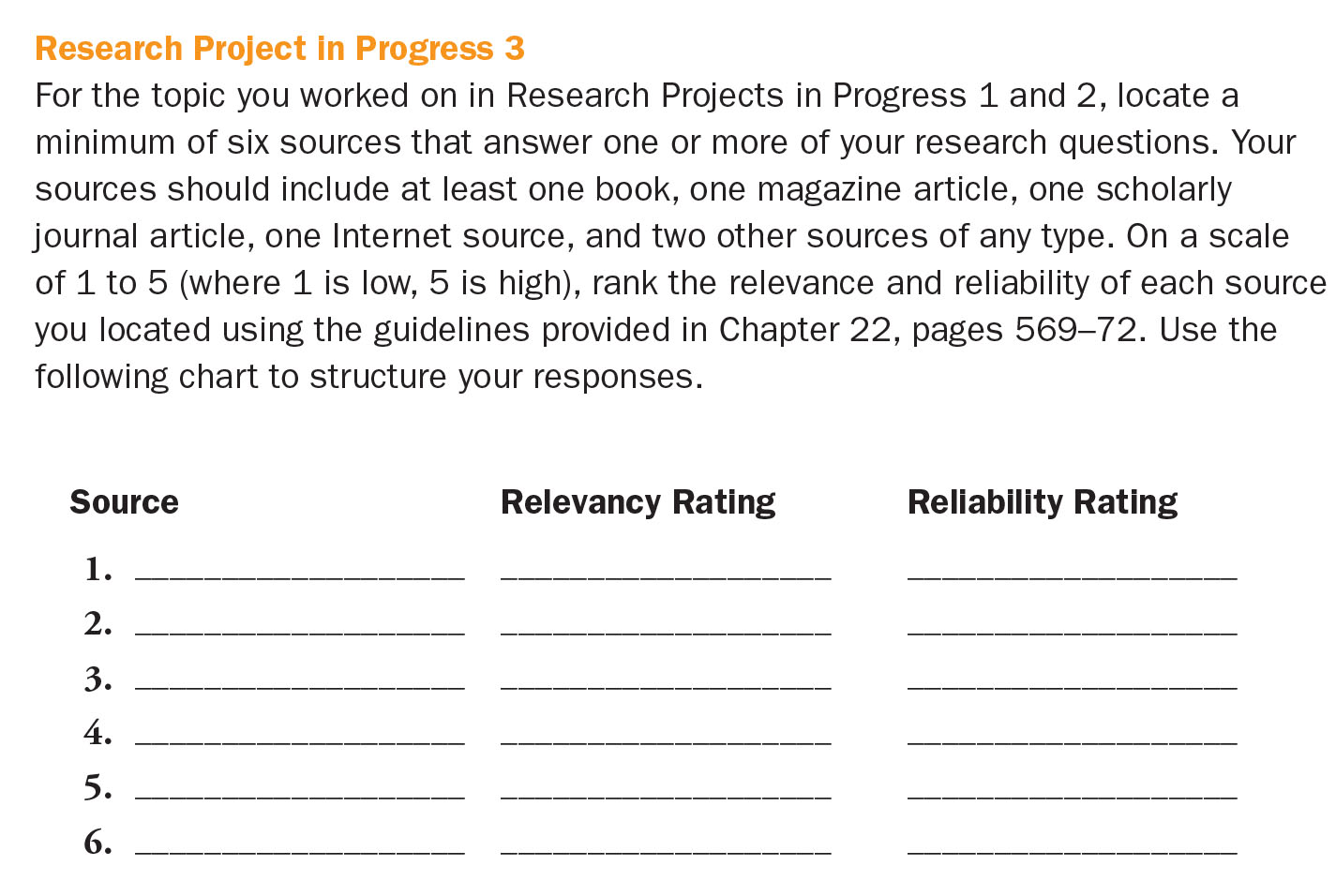CREATING AN ANNOTATED BIBLIOGRAPHY
As part of the process of writing a research project, some instructors may require you to create an annotated bibliography, a list of sources that includes both publication information and a brief summary for each source. Annotated bibliographies are useful ways to document your research process, so they include all the sources you consulted in researching your topic.
Your writing situation will influence the information you include in your annotations, but for most college research projects, the annotations should summarize the main point of the source. They may also evaluate the source in terms of how it relates to your thesis. For example, does it provide useful background information or supporting examples, or does it represent a popular alternative viewpoint? A sample annotated bibliography for researching the use of digital textbooks and e-learning in college classrooms appears below.
SAMPLE ANNOTATED BIBLIOGRAPHY
Bajarin, Ben. “Reinventing the Book for the Digital Age.” Time, 12 Nov. 2013. techland.time.com/2013/11/12/reinventing-the-book-for-the-digital-age/.
This article from a general-interest magazine describes the features that e-books provide while suggesting even more ideas for future e-books.
Falc, Emilie O. “An Assessment of College Students’ Attitudes towards Using an Online E-Textbook.” Interdisciplinary Journal of E-Learning and Learning Objects, vol. 9, 2013, pp. 1-12, www.ijello.org/Volume9/IJELLOv9p001-012Falc831.pdf.
This article from a scholarly journal reports on research studying student experiences with e-textbooks. Recommendations are given for faculty to guide their students on effective use of e-textbooks.
Giacomini, Cara, et al. “The Current State and Potential Future of E-Textbooks.” EDUCAUSE Library, 5 Nov. 2013, library.educause.edu/~/media/files/library/2013/11/elib1304-pdf.
This reports on a pilot study looking at how students interact with particular e-textbook platforms and includes the results and recommendations.
Keengwe, Jared. Research Perspectives and Best Practices in Educational Technology Integration. Information Science Reference, 2013.
This book provides research-based information on how e-learning can be integrated into the college classroom in ways that make technological, practical, and educational sense.
Young, Jeffrey R. “The Object Formerly Known as the Textbook.” The Chronicle of Higher Education, vol. 59, no. 21, 27 Jan. 2013, pp. A16-A17, chronicle.com/article/Dont-Call-Them-Textbooks/136835/.
This article from a periodical aimed at college faculty discusses the rise of online textbooks on college campuses. It also explains all the extra features these resources include and suggests that universities should begin producing them as well as traditional publishers.

Research Project in Progress 4
For the three most relevant and reliable sources you identified in Research Project in Progress 3, use the suggestions in Working with Sources: Taking Notes, Summarizing, and Paraphrasing to take notes on your sources. Your goal is to provide information and support for the ideas you developed earlier. Choose a system of note-taking, writing summary notes and paraphrases, annotating and underlining, and recording quotations as needed. As you work, try to answer your research questions and keep your working thesis in mind.
Research Project in Progress 5
For the three sources you worked with in Research Project in Progress 4, use the suggestions to synthesize your notes using categories or a graphic organizer. As you work, keep your research questions and working thesis in mind. After synthesizing, consider whether you need to alter your working thesis or conduct additional research.